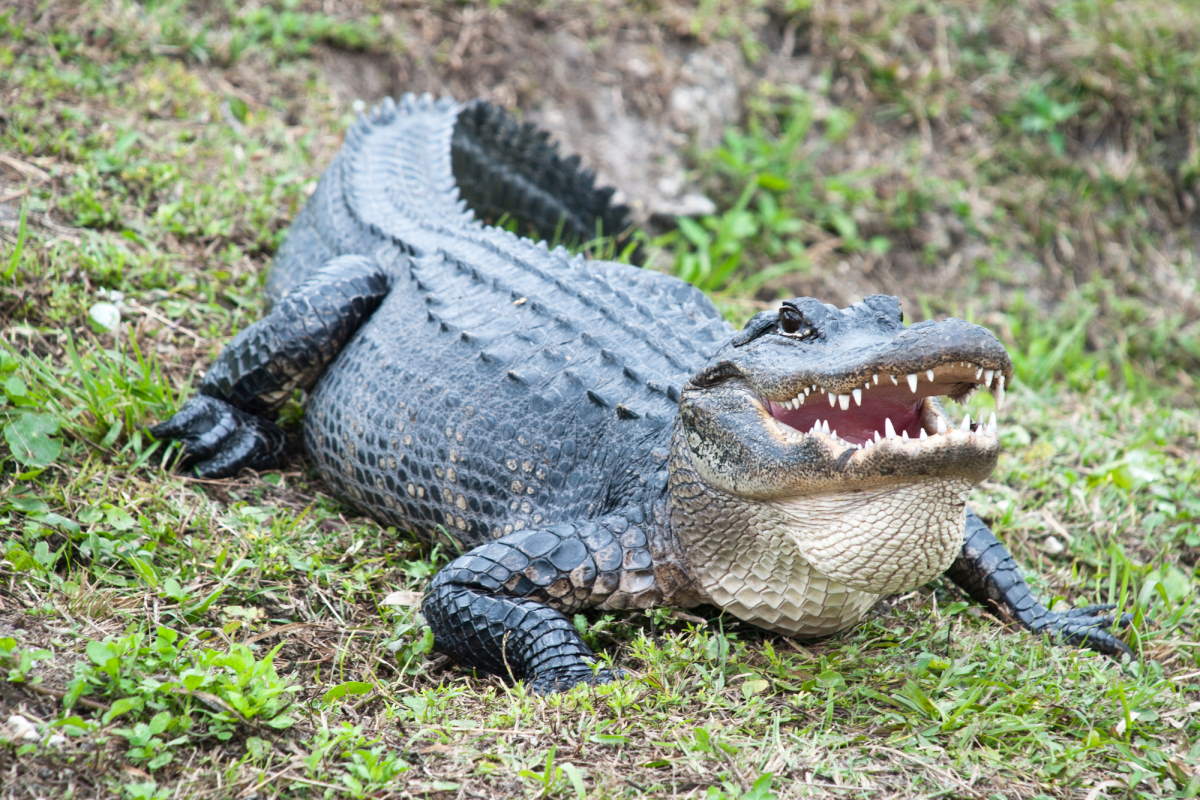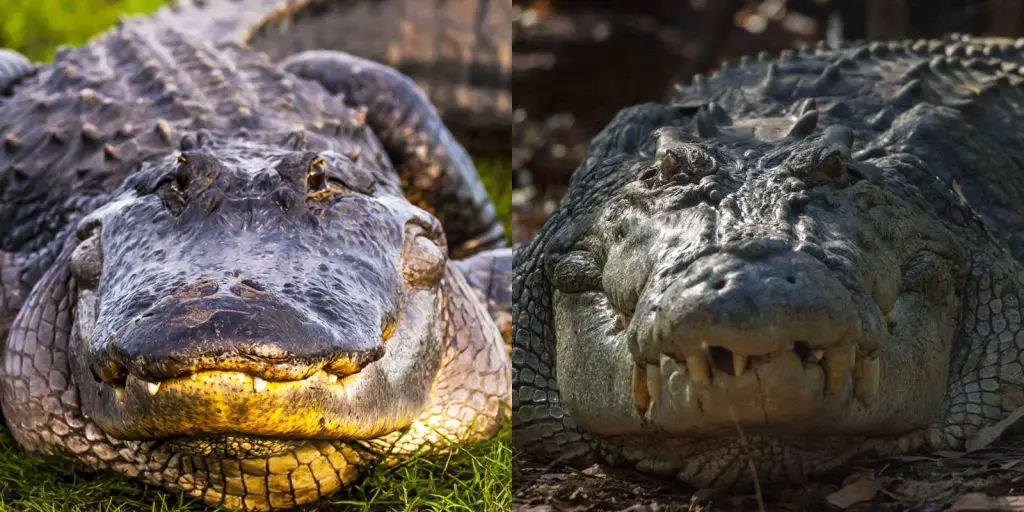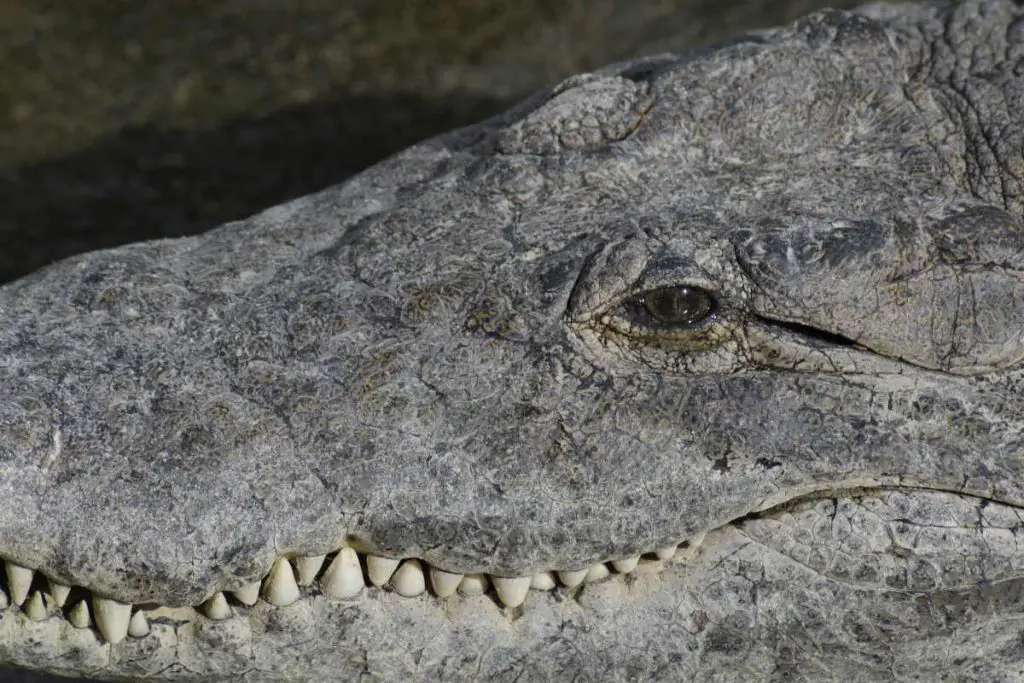Alligators are very large reptiles. An alligator is also a crocodilian – they are close cousins of crocodiles. But, unlike crocodiles – which can be found on all continents except Europe and Antarctica, they are native to only the United States and China. Here are 20 amazing alligator facts.
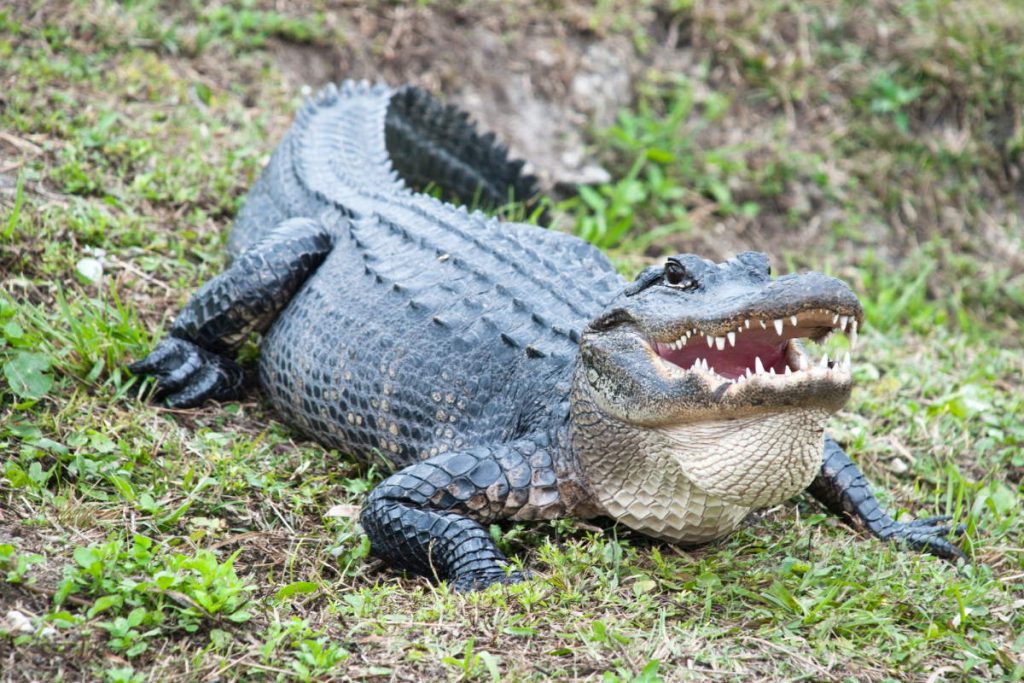
Alligator facts
1. Alligators can get quite large
Like crocodiles, alligators continue to grow throughout their life. As a result, old males can get quite large – they can often reach at least 14 or 15 feet (up to 4.5 meters) in length, which is even larger than some crocodile species (but not all of them, the biggest reptiles are still crocodiles).
The largest specimen ever recorded and properly authenticated, known as the Alabama alligator, was measured 15 feet and 9 inches long (4.8 meters). The huge alligator weighed 1,011.5 pounds (~458.8 kg).
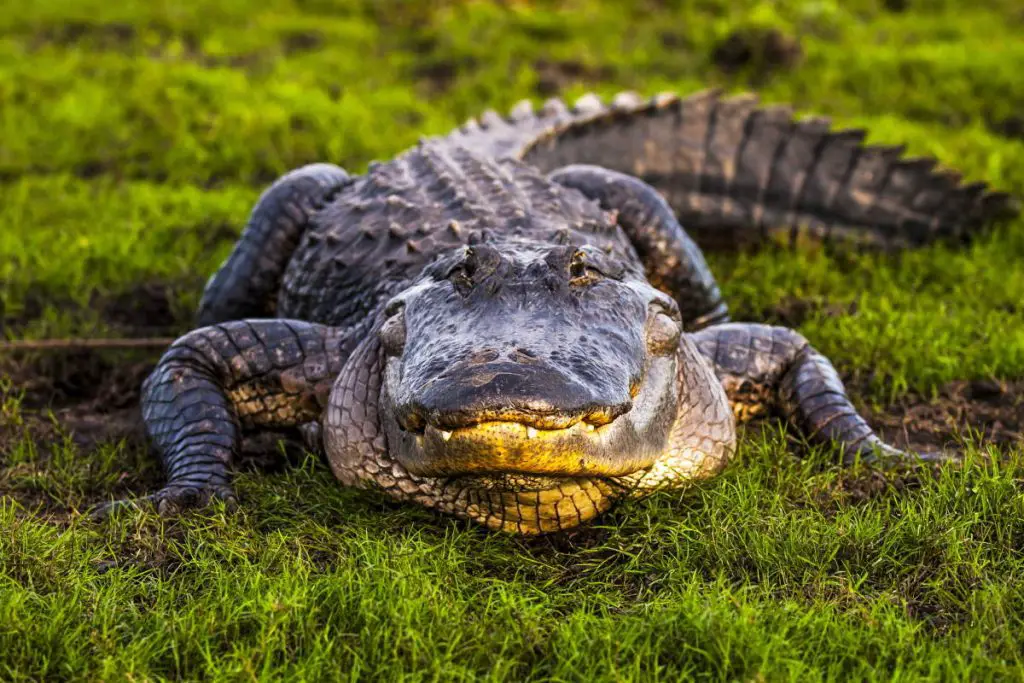
Related: 6 Largest Alligators Ever Recorded
2. Alligators can use basic tools
An alligator’s brain weighs only about 8 or 9 grams, and it has the average size of a walnut, but that doesn’t mean they are stupid. They have been observed using lures (like bait sticks) to hunt birds.
3. The oldest alligator is Muja, an American alligator at Belgrade Zoo in Serbia
In 1937, an adult specimen was brought to the Belgrade Zoo in Serbia from Germany. At the time he arrived, he was already an adult, so it is assumed that he was born before 1936. As of 2019, it is now at least 83 years old. Although no valid records exist about its date of birth, this alligator, officially named Muja, is considered the oldest alligator living in captivity. He is still a healthy animal.
In the wild, the lifespan of alligators is 35-50 years.
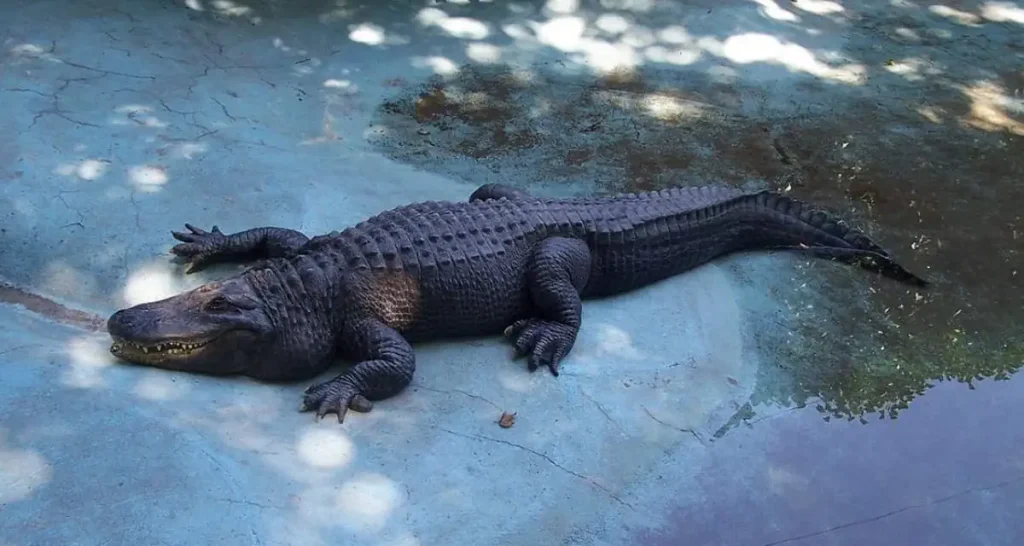
4. The origin of the name “Alligator”
The name “alligator” is probably an anglicized form of el lagarto, the Spanish term for “the lizard”, which early Spanish explorers and settlers in Florida called the alligator.
5. Their prehistoric ancestors were much bigger
The first crocodilians appeared around 250 million years ago, at the same time when dinosaurs appeared. The prehistoric ancestors of alligators (and crocodiles) were much bigger than today’s counterparts.
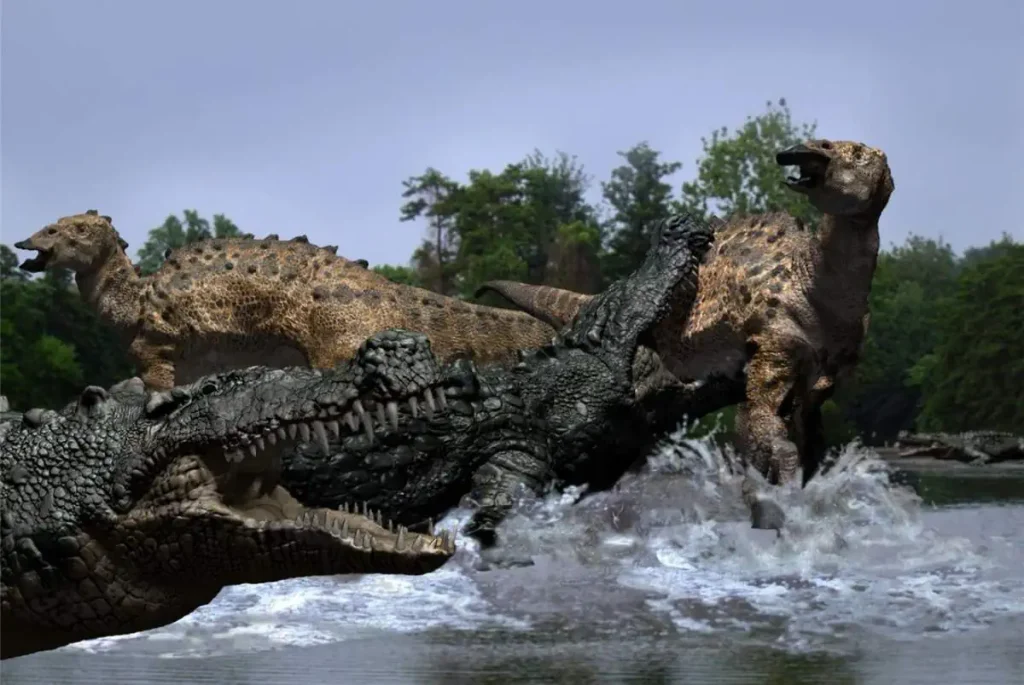
For example, Deinosuchus, an extinct genus related to the alligator that lived 80 to 73 million years ago, was far larger than any modern crocodile or alligator, with the largest adults measuring 10.6 meters (35 feet) in total length.
Its name translates as “terrible crocodile” and is derived from the Greek deinos, “terrible”, and soukhos, “crocodile”.
Its overall appearance was fairly similar to its smaller relatives (today’s alligators).
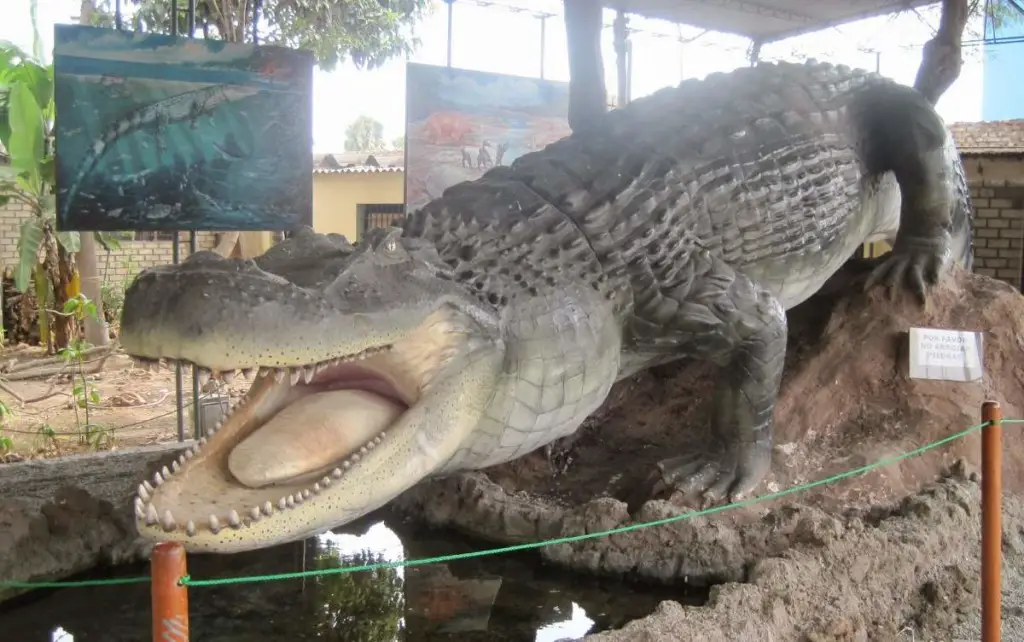
Related: Largest prehistoric alligators
6. Alligators are much less aggressive than crocodiles
Alligators are much less aggressive than their cousins, crocodiles, especially saltwater crocodiles. They are generally timid towards humans and tend to walk or swim away if one approaches. They do not show aggressiveness against humans.
According to Britannica, most incidents did not seem to start with the alligator but rather began with people attempting to pick up, capture, or otherwise handle the animal. Between 2000 and 2007, alligator attacks averaged just under 11 per year in Florida, with a death ratio of less than 10%. Between 1948 and 2005, wildlife officials documented 379 alligator attacks on people, which resulted in 17 deaths.
Although rare, unprovoked alligator attacks do occur.
7. In Florida, feeding wild alligators at any time is illegal
There’s a common sign in Canada: “Do NOT feed the bears. A FED bear is a DEAD bear.”
The same goes for the alligators, too. If fed, they will eventually lose their fear of humans and will learn to associate humans with food, thereby becoming both a greater danger to people and at greater risk from them.
8. It is easy to hold shut an alligator’s mouth
Alligators have a very powerful bite. But, the muscles to open their jaw aren’t as strong, actually in comparison they are fairly weak. An adult human could hold the jaws of an alligator shut with their bare hands. That’s why you’ll see wranglers just holding their jaws shut until they use tape to secure them. The same goes also for crocodiles.
But, do not ever try it yourself! Getting in the position to hold their jaws shut can be really dangerous.
9. Their gender is determined by temperature
Alligator eggs become female or male depending on the temperature.
Eggs exposed to warmer temperatures (above 93 °F / 34 °C) become males, while those exposed to cooler temperatures (below 86 °F / 30 °C) become females. Intermediate temperatures can produce either females or males.
10. They produce tears
Like crocodiles, alligators do produce tears, but again, it isn’t actually crying. While eating, they swallow too much air, which gets in touch with lachrymal glands (glands that produce tears) and forces tears to flow. They also produce tears to clean and moisturize their eyes.
11. Alligators do not sweat
They don’t have sweat glands, and they release heat through their mouths.
12. They are cold-blooded
Alligators are cold-blooded, like other reptiles – which means they are unable to regulate their body temperatures internally as humans and other warm-blooded animals do.
As a result, they have a very slow metabolism, which allows them to survive long periods without food. They can survive many months on a single large meal.
13. Alligator diet can include fruit and plants
Alligators are carnivorous opportunists, they can eat any type of flesh. When young, alligators eat fish, insects, snails, crustaceans, and worms. As they mature, progressively larger prey is taken, including larger fish such as gar, turtles, and various mammals, particularly coypu and muskrat, as well as birds, deer, and other reptiles.
Some of the alligators housed with large tortoises at the St. Augustine Alligator Farm Zoological Park were seen eating lettuce leaves and squash that had been put out for the tortoises, according to the Everglades Holiday Park website. They had also been seen eating kumquats, oranges, lemons, and limes directly from trees.
Some alligators were recently reported to also eat fruit such as wild grapes and elderberries.
14. Alligators survive in frozen swamps by sticking their noses through the ice to breathe
That’s how they get oxygen when the water is frozen. Since they are cold-blooded, they can slow down their metabolism, so they don’t need to eat as their heart rate and digestive system slow down. They just sit in the water with their nose sticking out of the surface ice and wait for the warm weather.
15. Females are devoted mothers
The mother defends the nest from predators and assists the hatchlings to the water. She will provide protection to the young for about a year if they remain in the area.
Most of the young alligators, however, are eaten in their first year of life – by other predators like lizards, birds, raccoons, otters, snakes, other alligators, and even fish. Adult alligators regularly cannibalize younger individuals. At best, only 10-20% of hatchlings can survive to adulthood.
16. Turtles sometimes hitch a ride on top of alligators
Turtles have been observed climbing onto the back of alligators for a free ride. The opposite was also observed: Baby alligators can ride turtles.

17. They grow new teeth throughout their lives
An adult alligator has between 74-80 teeth in its mouth. If an alligator loses a tooth, a new one grows to take its place. It is believed that alligators go through 2,000 to 3,000 teeth in a lifetime.
18. They have a good night vision
Like crocodiles, alligators’ night vision is very good and they are mostly nocturnal hunters.
19. Alligators don’t chew their food
They do not chew their food. Like many large crocodilians, they swallow stones, which may act as ballast to balance their bodies or assist in crushing food, similar to grit ingested by birds.
20. They perform “death roll”
Like crocodiles, alligators perform “death roll” – they consume food that cannot be eaten in one bite by biting and then spinning or convulsing wildly until bite-sized chunks are torn off. They sometimes consume it by allowing it to rot, if they’re not too hungry.
Common misconceptions about alligators
Alligator skin is not bullet-proof
Contrary to the common myth, alligator skin (and also crocodile skin) is not bulletproof.
They do not eat their babies
Neither alligators nor crocodiles eat their babies. No crocodilian does that. Evon Hekkala, the principal investigator at Fordham University’s Hekkala Lab and a research associate at the American Museum of Natural History, says “A long time ago, people would observe the crocodiles and alligators digging up nests and having hatchlings in their mouths, and they would think that they were eating them.” In fact, they were taking their babies to the water.
A healthy adult can easily outrun an alligator
It is a myth that an alligator can outrun a human. Alligators top out at a speed of around 11 miles per hour (18 kph) on land when they “belly run”, and for a very short distance. It can’t maintain that speed for very long. They usually go much slower than that. While walking on their legs, which is called the “high walk”, their top speed is only 5 km/h (3 mph). So, an average healthy adult human could easily outrun an alligator, zigzagging or not.
Sources
- Alligator on Wikipedia
- American Alligator on Wikipedia
- “The creature feature: 10 fun facts about the American alligator” on Wired
- Muja (alligator) on Wikipedia
- Fun Alligator Facts for Kids on the Science Kidz website
- “Alligator Facts – Fun Facts About Alligators” on the Everglades Holiday Park website
- Alligator Facts on the Florida Fish and Wildlife Conservation Commission website
- How Many Elephants are Left in the World in 2025? - August 17, 2025
- Moon Landings: All-Time List [1966-2025] - February 2, 2025
- What Is Max-Q and Why Is It Important During Rocket Launches? - January 16, 2025
